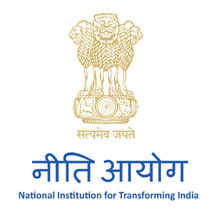India’s Electric Mobility Transformation: Progress to Date and Future Opportunities
NITI Aayog together with Rocky Mountain Institute (RMI) has released a report titled “India’s Electric Mobility Transformation: Progress to Date and Future Opportunities”. The report analyses the opportunities for the automobile sector and government under the Faster Adoption and Manufacturing of Electric Vehicles II (FAME II) scheme.
Highlights of the Report
- Benefits of FAME II will go beyond the vehicles that are eligible under the FAME II.
- There would be considerable energy and CO2savings associated with two-, three-, and four-wheelers and buses covered by FAME II over their lifetime, as well as the potential savings associated with greater adoption levels by 2030.
- The electric buses covered under FAME II will account for 3.8 billion vehicle kilometres travelled over their lifetime.
- In order to capture the opportunity potential in 2030, batteries must remain a key focal point since they will continue to be the key cost driver of EVs.
- Vehicles eligible under FAME II scheme can cumulatively save 5.4 million tonnes of oil equivalent over their lifetime worth Rs 17.2 thousand crores.
- Electric Vehicles sold through 2030 could cumulatively save 474 million tonnes of oil equivalent (Mtoe) worth Rs 15 lakh crore and generate net CO2 savings of 846 million tonnes over their operational lifetime.
- India needs active participation from the auto industry to ease electric mobility transition. The auto and battery industries could collaborate to enhance customer awareness, promote domestic manufacturing, promote new business models, conduct R&D for EVs and components, consider new business models to promote EVs
- The government must focus on a phased manufacturing plan to promote EVs, provide fiscal and non-fiscal incentives for phased manufacturing of EVs and batteries. Different government departments can consider a bouquet of potential policies, such as congestion pricing, ZEV credits, low emission/exclusion zones and parking policies among others to drive adoption of EVs.
- India’s electric vehicle market is poised for growth with a blend of policies, such as FAME II, and the automotive industry’s willingness to provide new mobility solutions to the citizens of the country. Such a transformation will create enormous economic, social and environmental benefits for the citizens of India.
The report reasserts optimism for India to achieve mass-scale EV adoption that will translate to a massive reduction in oil imports and CO2 emissions.
Month: Current Affairs - April, 2019


